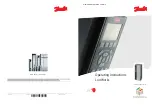shifted path for the rear channels is a 90 degree phase difference between the output
channels A and B. This results in an unsteered signal, which is what we want.
In discussions at the IRT Munich I discovered that there is a European standard surround
encoder. This encoder simply attenuates the two surround channels by 3dB, and adds
them into the front channels. Thus the left rear channel is attenuated and added to the left
front channel. This encoder has many disadvantages when encoding multichannel film
sound, or recordings which have specific instruments in the surround channels. Both the
loudness and the direction of these instruments will be incorrectly encoded. However this
encoder works rather well with classical music, where the two surround channels are
primarily reverberation. The 3dB attenuation was carefully chosen through listening tests
to produce a stereo compatible encoding. I decided that our encoder should include this
3dB attenuation when classical music was being encoded, and that one could detect this
condition through the relative levels of the front channels and the surround channels in
the encoder.
A major function of the function fc in the surround channels is to reduce the level of the
surround channels in the output mix by 3dB when the surround channels are much softer
than the front channels. Circuitry is provided to compare the front and rear levels, and
when the rear is less by 3dB, the value of fc is reduced to a maximum of 3dB. The
maximum attenuation is reached when the rear channels are 8dB less strong than the front
channels. This active circuit appears to work well. It makes the new encoder compatible
with the European standard encoder for classical music. However instruments which are
intended to be strong in the rear channels are encoded with full level.
There is another function of the real coefficient mixing path fs for the surround channels.
When a sound is moving from the left front input to the left rear input active circuitry
detects that these two inputs are similar in level and in phase. Under these conditions fc is
reduced to zero and fs in increased to one. This change to real coefficients in the
encoding results in a more precise decoding of this type of pan. In practice this function
is probably not essential, but it seems an elegant refinement.
To summarize: Active circuits are provided to
1.
Reduce the level of the surround channels by 2.2dB when the two channels are in
phase
2.
Increase the real coefficient mixing path for the rear channels sufficiently to
create an unsteered condition when the two rear channels are out of phase
3.
Decrease the level of the surround channels by up to 3dB when the surround level
is much less than the front levels.
4.
Increase the level and negative phase of the rear channels when their level is
similar to the front channels.
5.
Make the surround channel mix use real coefficients when a sound source is
panning from a front input to the corresponding rear input.


















